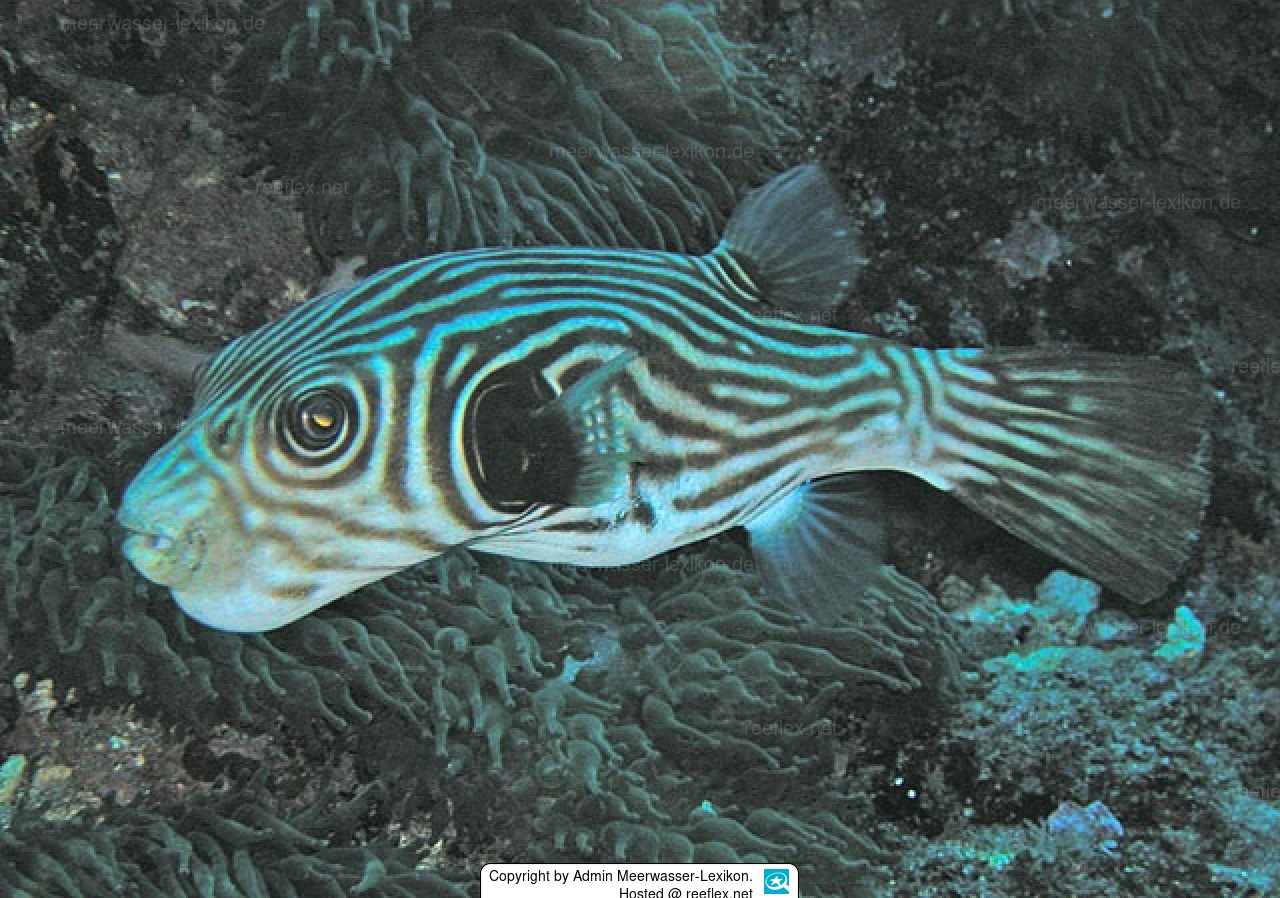Info
Pufferfish are characterized by tough skin often covered with small spiny scales, a beak-like tooth plate divided by a median suture, a slit-like gill opening in front of the base of the pectoral fin, no pelvic fins, no fin spines, a single, usually short dorsal fin, a single, usually short anal fin, and no ribs.
They are capable of inflating their abdomen with water when startled or disturbed, and they are able to produce toxins such as tetrodotoxin and saxitoxin and accumulate them in the skin, gonads and liver. The level of toxicity varies by species and also by geographical area and season
Arothron carduus is an inhabitant of inner reefs of coral reef areas in very shallow water at a depth of up to 10 meters .
Arothron carduus is a rarely observed pufferfish.
The toxicity of this species was not known according to Nakabo, 2002, but Clinical Toxinology Resources, Australia, reports a presynaptic neurotoxin for this pufferfish!
Synonym: Tetrodon carduus Cantor, 1849
Puffer fish can produce toxins such as tetrodotoxin and saxitoxin and accumulate them in the skin, gonads and liver.
The toxin tetrodotoxin, which is contained in the fugu, is 1000 times more toxic than cyanide and there is no antidote serum, death then occurs by respiratory paralysis
The degree of toxicity varies depending on the species, but also on the geographical area and season.
We recommend that you never prepare puffer fish yourself, as the risk of fatal poisoning is far too great.
If you still absolutely want to eat puffer fish meat (fugu), then the fish should only be slaughtered by a Japanese special chef with a license and several years of training.
Only the training of these special chefs can guarantee the correct slaughter, complete removal and proper disposal of all toxic parts of the fish.







 Admin Meerwasser-Lexikon
Admin Meerwasser-Lexikon
















